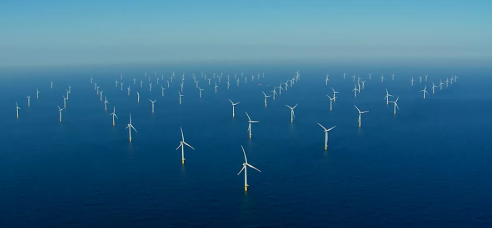The ocean plays a vital role in the global economy. But it is threatened by climate change and overexploitation. Could the blue economy help?
Across Europe, the ocean provides food, energy, and a means of transporting goods.
Ocean-related activities generated €624 billion in revenue and provided jobs to 3.6 million people in the European Union in 2021.
This part of the economy is known as the « blue economy, » which covers a range of sectors, including maritime transport, tourism, fishing and aquaculture, biotechnology and research, resource extraction, and renewable energy.
However, many of these industries produce significant emissions and are harmful to the environment. Maritime transport, for example, was responsible for 3 to 4% of the EU’s total emissions in 2019. Without major changes in emission reduction, this figure is expected to increase by at least 90% by 2050.
« The idea of a sustainable blue economy is to preserve the health of the ocean, which also enhances the productivity of the ocean, » explains Jan-Gunnar Winther, researcher and pro-rector at the Arctic University of Norway (UiT).
Many companies and stakeholders in the blue economy are committing to this path. Initiatives such as building offshore wind farms to generate electricity, using the power of ocean waves for energy, or producing sustainable fish feed for aquaculture from seaweed are multiplying.
Multiplying Solutions, an Urgent Challenge
A more sustainable use of ocean resources would also contribute to strengthening sustainability in other sectors of the global economy, particularly in the transition to renewable energy through solutions such as tidal energy and offshore wind farms.
But these initiatives often face structural obstacles that prevent their development.
Although the environmental impact of building offshore wind farms raises concerns, these farms are currently one of the least CO2-emitting electricity production methods.
Offshore wind energy is currently hindered by supply chain bottlenecks and issues with connecting farms to the power grid, according to Pierre Tardieu, policy manager at WindEurope, an association promoting wind energy in Europe.
« We have a very large offshore wind farm that is fully constructed in Germany, for example, 900 MW that we cannot account for in our broader statistics because it is not yet connected to the grid, » he says.
Although the wind farm off the German island of Borkum is ready to produce electricity, no cable currently connects it to the land-based electrical grid. According to Pierre Tardieu, it will take at least another year for that to happen.
Across Europe, expanding the electrical grid to integrate cleaner solutions is a challenge.
How can these solutions be developed while ensuring environmental responsibility?
Source: euronews



